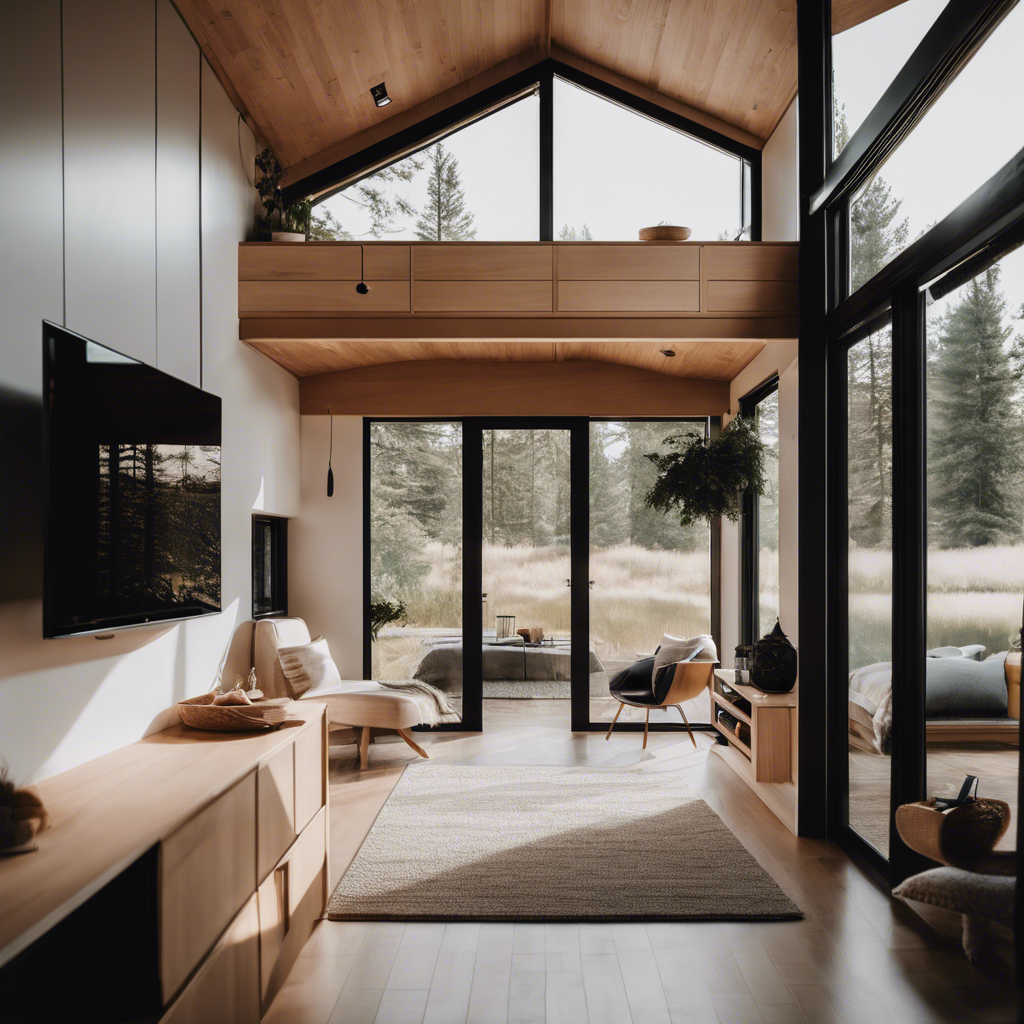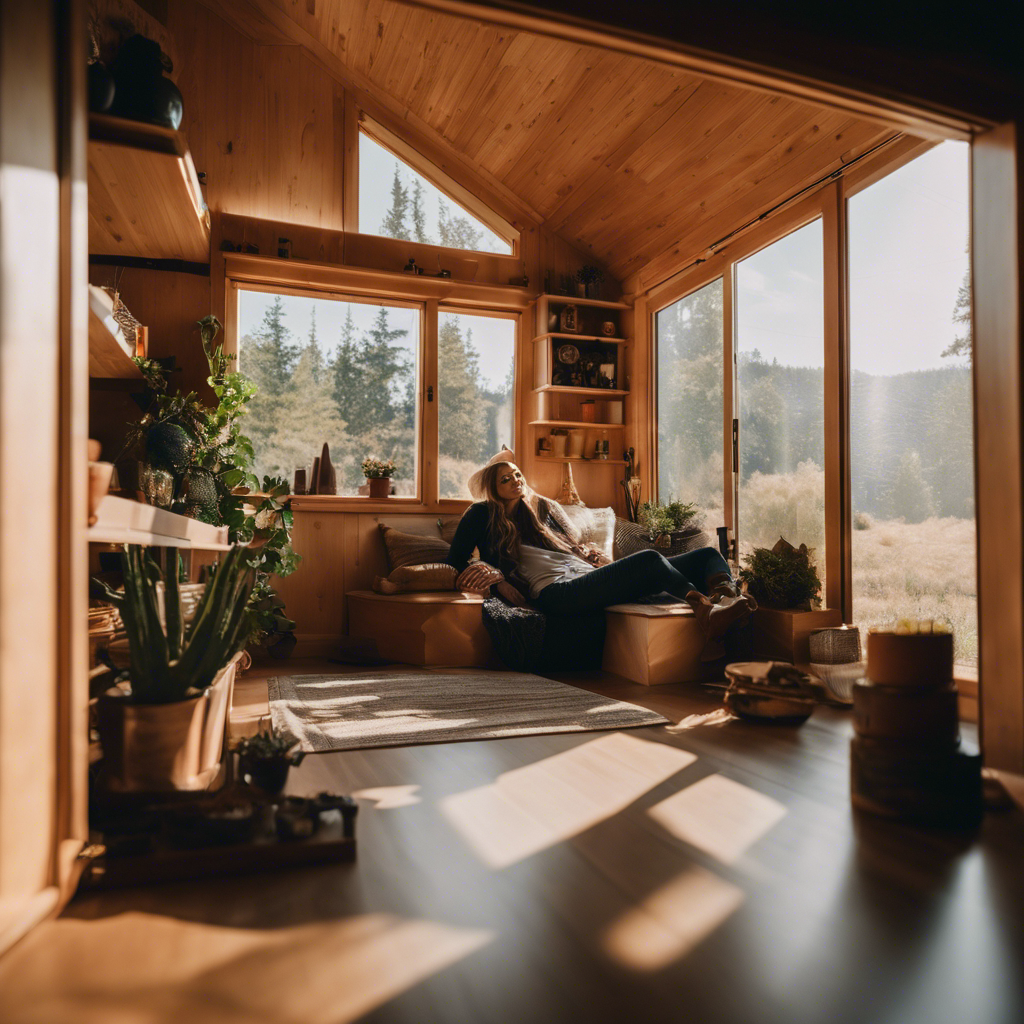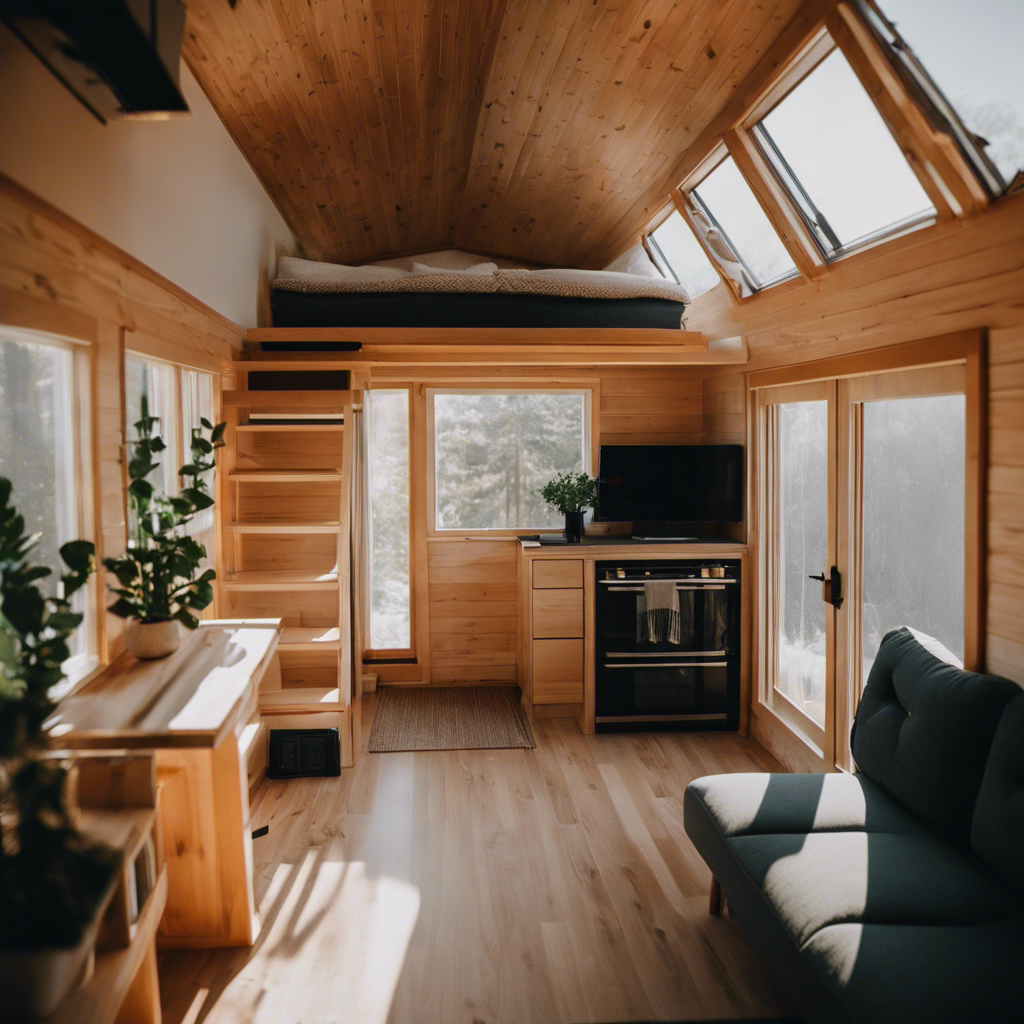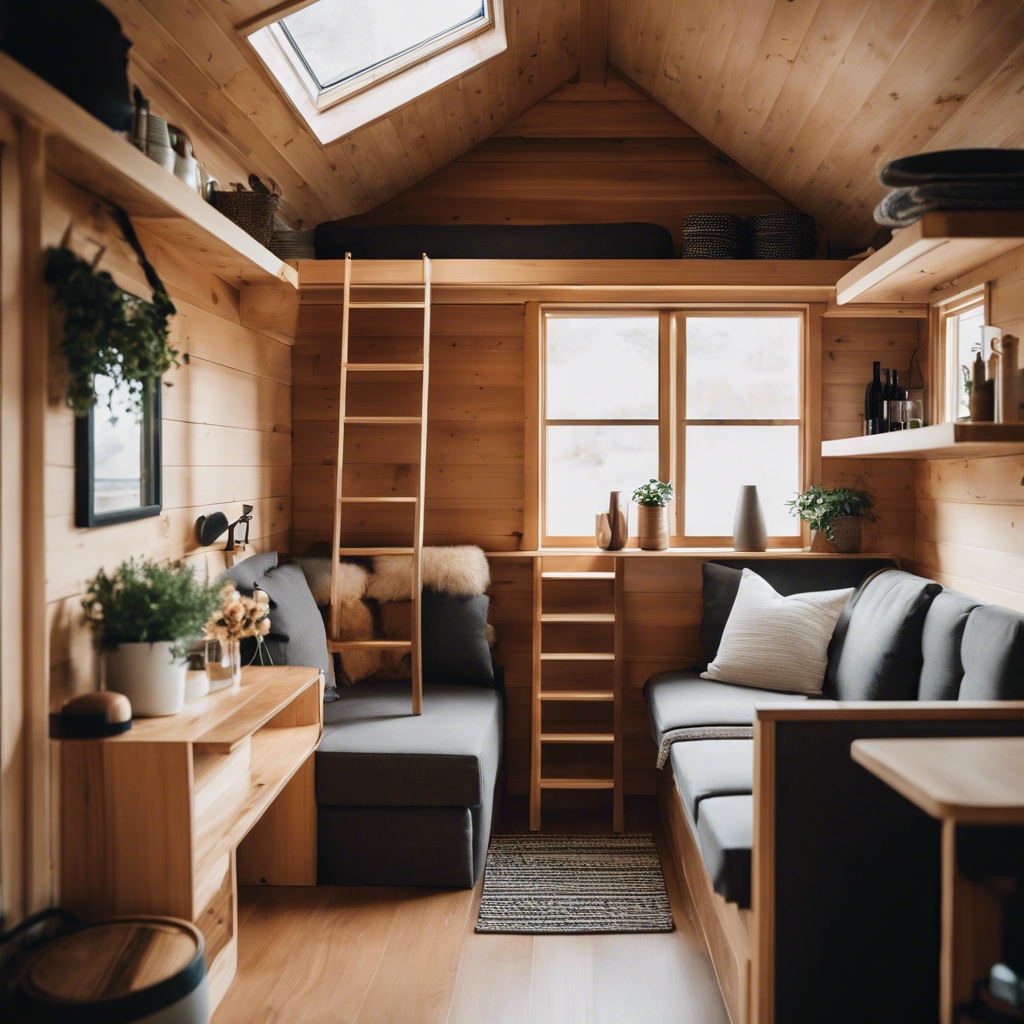As I ponder the question, ‘Is living in a tiny house the key to happiness?’ I can’t help but feel drawn to the simplicity and freedom it promises. The allure of minimalism and financial ease is undeniably appealing.
But before taking the plunge, I want to explore all aspects of this lifestyle change. In this article, we’ll delve into the design, self-reflection, lifestyle adjustments, concerns, and practical considerations that come with living in a small space.
Let’s uncover the truth behind finding happiness in a tiny house.
The Design-Focused Approach

When considering the design-focused approach to living in a tiny house, I need to prioritize my personal needs and functions. Design challenges can arise when trying to create a functional living space in a limited area. It’s crucial to carefully assess my functional needs and determine how the house can support them.
Functionality should be the main focus of the design process, ensuring that every element serves a purpose. This requires a deep understanding of my lifestyle and the activities I engage in on a daily basis. By taking a thoughtful and anthropological approach, I can gain insights into the necessary functions of the house and make informed design decisions.
Ultimately, the success of living in a tiny house lies in how well it meets my functional needs.
Importance of Self-Reflection

Reflecting on my own experiences and emotions is essential for personal growth and understanding, allowing me to make informed decisions and prioritize my well-being.
The benefits of self-reflection go beyond just gaining insight into oneself; it can also lead to finding contentment in minimalism. By examining our thoughts, actions, and values, we can identify what truly brings us happiness and fulfillment.
Self-reflection helps us detach from societal expectations and embrace a simpler, more intentional lifestyle. It allows us to let go of material possessions that no longer serve us and focus on what truly matters.
Through self-reflection, we can cultivate gratitude, mindfulness, and a sense of purpose. It’s through this process that we can find contentment in minimalism, appreciating the beauty and abundance that exists in simplicity.
Embracing the Tiny House Lifestyle

I absolutely love the freedom and simplicity that comes with embracing the tiny house lifestyle. It’s not just about the size of the house, but the commitment to a different way of living. Design considerations play a crucial role in making a tiny house functional and fulfilling. Overcoming challenges is a part of the journey, but the rewards are worth it. In order to create a successful tiny house, I have found that prioritizing my needs and functions is essential. By objectively assessing my life and determining what my house needs to support, I can ensure that it meets my requirements. It’s important to remember that form should follow function in the design process. Taking an anthropological approach has helped me understand the necessary functions of my house.
| Design Considerations | Overcoming Challenges | Lifestyle Adjustments |
|---|---|---|
| Prioritize needs and functions | Address worries and concerns | Adapt to minimalist lifestyle |
| Objectively assess life | Seek advice and guidance | Adjust daily routines and habits |
| Form follows function | Plan and prepare | Downsize and declutter |
Living in a tiny house requires a departure from consumer culture and a break from status symbols. This can be challenging, as it involves deprogramming from the mindset of always wanting more. Being okay with a smaller house and owning fewer things is crucial for long-term happiness. It’s not about the house itself, but about the lifestyle one adopts. While the size of the house may have aesthetic appeal, long-term success is not solely dependent on this. The commitment to priorities and doing what is necessary for a fulfilling life is what truly matters. So, despite the challenges and design considerations, embracing the tiny house lifestyle can lead to a simpler and more satisfying way of living.
Addressing Concerns and Worries

Addressing concerns and worries is essential when considering the transition to a tiny house lifestyle. It’s natural to have worries and doubts about such a significant change, but by seeking guidance and taking the time to alleviate these worries, you can make a more informed decision.
Here are three key areas to focus on when addressing concerns:
-
Practicality and Function: Understanding how a tiny house fits your needs and lifestyle is crucial. Seek guidance from experts or experienced tiny house owners to ensure that the design and layout will support your daily activities and provide necessary functionality.
-
Emotional Impact: Downsizing to a tiny house can be emotionally challenging. Seek guidance from those who’ve gone through similar transitions to learn coping strategies and techniques for dealing with potential feelings of isolation, overwhelm, and stress.
-
Financial Considerations: Seek guidance on the financial implications of building or buying a tiny house, including legal restrictions, zoning regulations, and potential limitations on resale value. Understanding these aspects will help alleviate worries and ensure a smoother transition to a tiny house lifestyle.
Finding Happiness in Simple Living

While living in a tiny house, I’ve discovered that finding happiness truly comes from embracing the simplicity of everyday life.
The benefits of minimalism are abundant in a small space, as it allows for a more intentional and mindful way of living.
By eliminating excess possessions and focusing on what truly brings joy and value, I’ve created a personalized space that reflects my unique personality and needs.
The process of decluttering and simplifying hasn’t only made my physical environment more organized and peaceful, but it has also had a profound impact on my mental well-being.
With fewer distractions and a clearer focus on what matters most, I’ve found a greater sense of contentment and fulfillment in my daily life.
Embracing minimalism and creating a personalized space has truly been the key to my happiness in living simply.
Frequently Asked Questions
What Are the Potential Challenges and Limitations of Living in a Tiny House in Terms of Space and Functionality?
Living in a tiny house brings challenges and limitations in terms of space and functionality. Limited storage, difficulties in organizing and lack of privacy are some of the potential challenges that need to be considered.
How Does Living in a Tiny House Impact One’s Social Life and Sense of Connection to the Outside World?
Living in a tiny house can impact mental well-being and personal relationships. It can promote a simpler lifestyle and foster a stronger connection to nature. However, it may also lead to feelings of isolation and limited social interactions.
What Are the Practical Considerations and Potential Obstacles When It Comes to Building or Buying a Tiny House?
Practical considerations and potential obstacles when building or buying a tiny house include financial implications, legal restrictions, finding suitable land, maintenance requirements, and limited resale value. It’s important to thoroughly assess these factors before making a decision.
How Does Downsizing and Decluttering Affect One’s Daily Routines and Habits?
Downsizing and decluttering have greatly impacted my daily routines and habits. I’ve learned to prioritize what truly matters, and the benefits of a simpler life have surpassed my expectations.
Are There Any Financial Implications or Limitations Associated With Living in a Tiny House?
Living in a tiny house has financial implications and limitations. The cost of building or buying a tiny house, legal restrictions, and limited resale value are factors to consider.
Conclusion
In the search for happiness, I embarked on a journey to uncover the truth behind living in a tiny house. Through exploring the design, self-reflection, lifestyle adjustments, and potential concerns, I’ve come to realize that the key to happiness doesn’t lie solely in the size of our homes.
It’s found in the simplicity, minimalism, and financial freedom that a tiny house offers. Like a blossoming flower in a humble garden, happiness blooms when we embrace the beauty of simple living.


